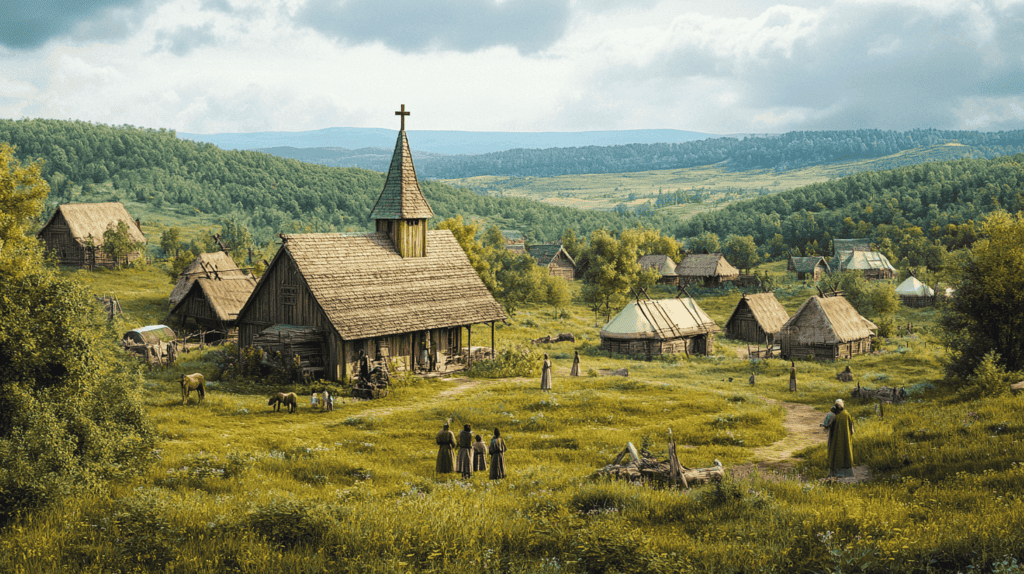
In the mid-10th century, Europe faced a formidable threat from the east. The Magyars, a nomadic tribe from the steppes of Central Asia, had been raiding and pillaging their way across the continent for decades. Their lightning-fast cavalry and deadly archery skills made them a terror to settled populations. However, in 955 AD, their reign of terror would come to an abrupt end at the hands of Otto I, King of Germany, in a battle that would reshape the political landscape of Europe.

The Rise of Otto I
Otto I ascended to the throne of the East Frankish Kingdom (which would later become Germany) in 936 AD. He inherited a realm plagued by internal strife and external threats. The powerful dukes of the various German territories constantly challenged royal authority, while Magyar raiders struck fear into the hearts of his subjects.
Despite these challenges, Otto proved to be a skilled and determined ruler. He systematically consolidated his power, suppressing rebellions and forging alliances. By 955, he had largely pacified the internal conflicts that had weakened the kingdom. This unity would prove crucial in the face of the Magyar threat.
The Magyar Menace
The Magyars had first appeared on the fringes of Europe in the late 9th century. These skilled horsemen and archers quickly gained a reputation for their swift, devastating raids. They would strike without warning, plundering towns and monasteries before vanishing back into the steppes.
For decades, European rulers had struggled to counter the Magyar tactics. Traditional heavy cavalry and infantry proved ineffective against the Magyars’ hit-and-run strategies. Many resorted to paying tribute to avoid attacks, which only encouraged further raids.

The Battle of Lechfeld
In 955, the Magyars launched another major invasion into Germany. Their target was the city of Augsburg, an important center of trade and religion. Otto I, recognizing the gravity of the threat, gathered a formidable army from across his realm.
The two forces met on August 10, 955, near the Lech River, not far from Augsburg. The battle that ensued would become known as the Battle of Lechfeld, and it would prove to be a turning point in European history.

Day One: Clash of Armies
As Otto’s army approached Augsburg, the Magyars attempted a surprise attack on his rear guard. However, this initial assault was repulsed by the heavy cavalry led by Conrad, Duke of Lorraine.
The main battle then commenced, with Otto leading his forces against the Magyar army. The German heavy cavalry, well-armored and disciplined, proved to be a formidable match for the lighter Magyar horsemen.
Otto’s tactical acumen was on full display. He positioned his forces to take advantage of the terrain, using nearby cliffs to protect his flanks. The royal legion, under Otto’s personal command, engaged the enemy from the right, while Conrad’s cavalry maneuvered to outflank the Magyars.
Despite suffering losses from Magyar archers, the German forces pressed their advantage in close combat. The heavily armored German knights overwhelmed the lightly equipped Magyar horsemen. Faced with the prospect of encirclement, the Magyars began an orderly retreat across the Lech River.

Days Two and Three: The Rout
While the first day of battle had been a clear victory for Otto, it was the events of August 11 and 12 that truly sealed the Magyars’ fate. Heavy rainfall and flooding slowed the retreating Magyar army, allowing German forces to hunt them down methodically.
Otto had wisely ordered all local German forces to hold the river crossings in Eastern Bavaria, cutting off the Magyars’ escape routes. This strategy, combined with the network of fortifications built during the reign of Otto’s father, Henry I, proved devastating to the retreating Magyars.
The result was a complete annihilation of the Magyar army. Those who weren’t killed in battle were captured and executed. The Magyar leaders, including Lél, Bulcsú, and Súr, were taken to Augsburg and hanged.

Aftermath and Legacy
The Battle of Lechfeld had far-reaching consequences for both the victors and the vanquished.
For Otto and Germany
Otto’s victory at Lechfeld cemented his position as the most powerful ruler in Europe. His army proclaimed him “emperor and father of the fatherland” on the battlefield. This prestige would later enable Otto to be crowned Holy Roman Emperor in 962, reviving the imperial title not seen since Charlemagne.
The battle also marked the end of internal strife in Germany, at least for a time. The various dukes and nobles, having fought together under Otto’s banner, were more inclined to accept his authority.
Furthermore, the victory freed Western Europe from the constant threat of nomadic invasions. This allowed for a period of relative peace and prosperity, enabling significant economic and cultural development in the following centuries.

For the Magyars and Hungary
The defeat at Lechfeld was a watershed moment for the Magyars. It marked the end of their raiding lifestyle and forced them to adapt to a more settled existence.
In the decades following Lechfeld, the Magyars underwent a profound transformation. They began to adopt many aspects of Western European culture, including Christianity. In 1000 AD, less than 50 years after their defeat at Lechfeld, Stephen I was crowned as the first Christian king of Hungary.
This transition from nomadic raiders to a settled, Christian kingdom was remarkably swift. The Magyars, who had once been the scourge of Europe, became integrated into the European political and cultural sphere.





